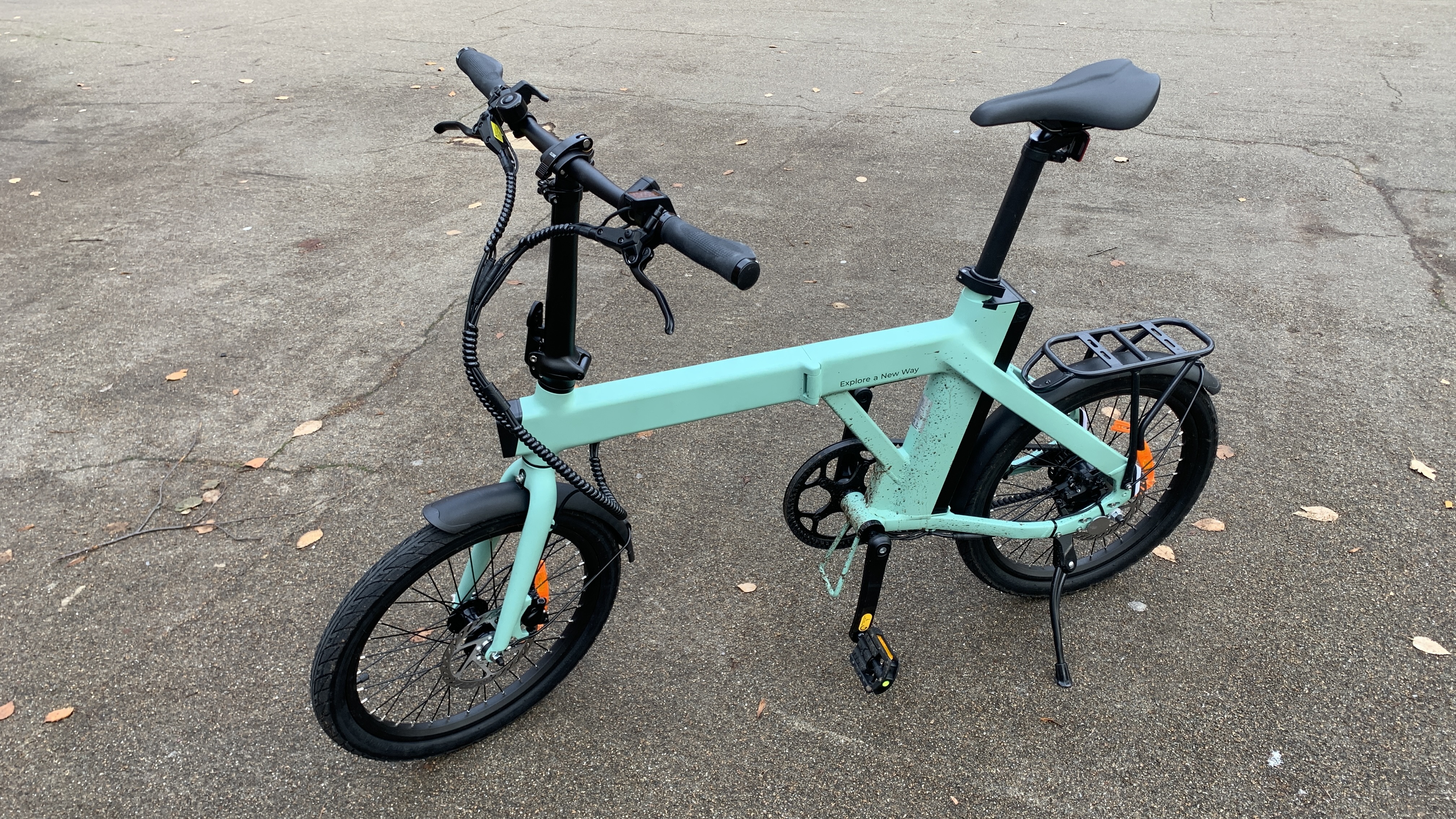
Engwe P20: One minute review
The P20 is Engwe’s most refined model so far. The company’s bikes are known for their large and brutalistic design style, so making a compact e-bike like this might seem like a deviation from its core values. In reality, this e-bike still looks remarkably Engwe-esque. It’s chunky and robust where it needs to be while still featuring a surprisingly lightweight build for carrying around.
Folding the e-bike can be done in as little as 10 to 15 seconds thanks to a couple of easy-to-use clips and the unique magnetic adapter system. The latter stops the e-bike from unfolding and is far better than the clip design of Brompton bikes. Unfortunately, it’s not quite as easy to maneuver as a typical Brompton, but it’s not far off. If you want a foldable e-bike with a little more power than a Brompton, then the P20 is a fantastic option.
At £1,199, you’ll be hard-pressed to find anything of such quality, and with the same attention to detail, elsewhere. It’s too early to tell whether the Engwe P20 will make it onto our list of the best e-bikes but it’s certainly a strong contender.
Engwe P20: Price and availability
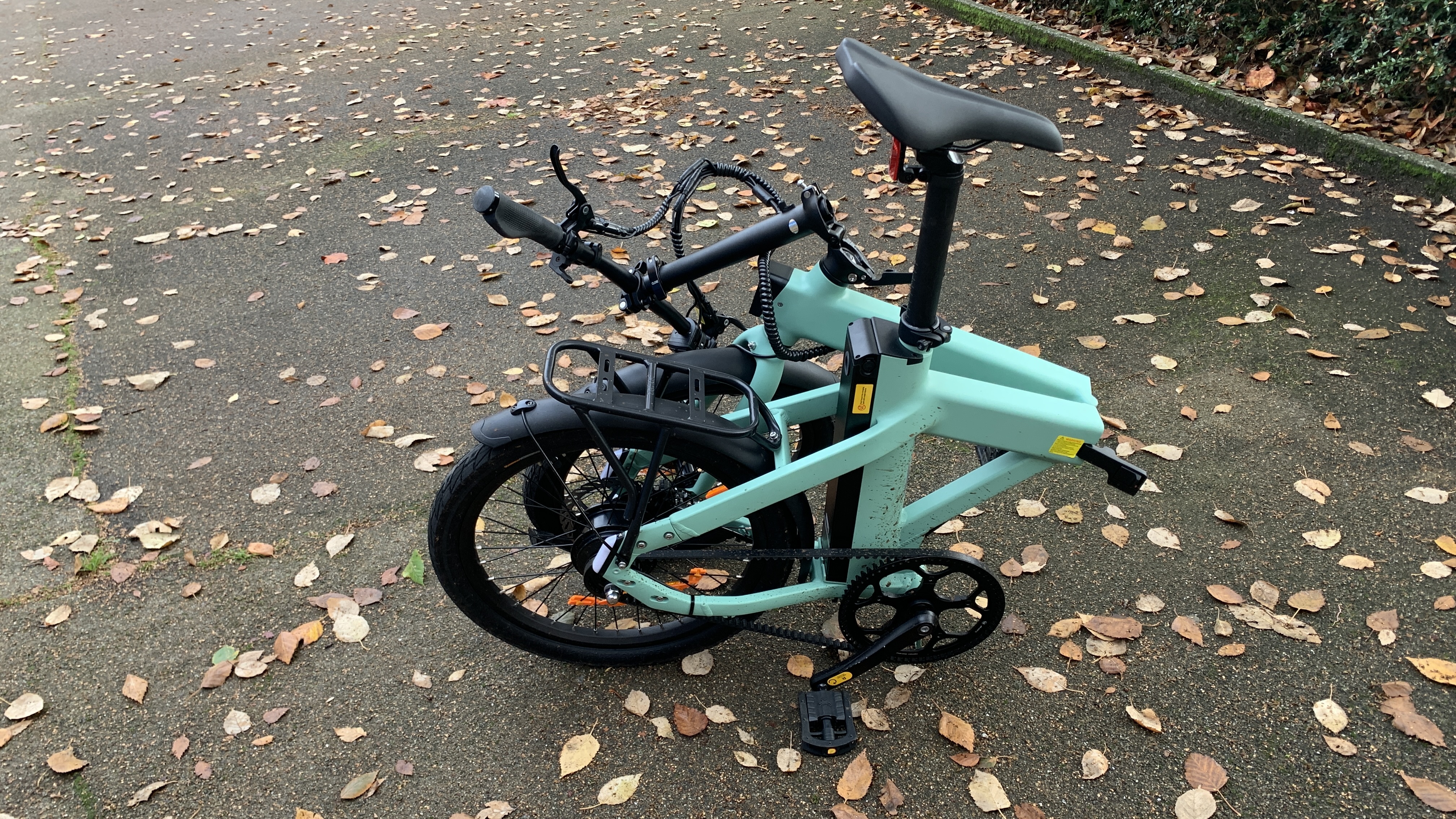
- £1,199 / €1,299
- Not available in the US
- Available from the manufacturer directly
The Engwe P20 is only available in UK and EU markets. The 250W motor and 15.5mph / 25kph speed limiter make it road-legal everywhere it’s sold. There won’t be a US version as this e-bike is specifically positioned for the UK market. Unlike many other Engwe e-bikes, there’s no option to upgrade the battery.
It’s available in black, white or a lovely mint green, which is the model I tested. The price is the same no matter which colour you go for. Engwe also offers a range of accessories at an additional cost, including a rack bag, bike pump, and lock.
- Value score: 4/5
Engwe P20: Design
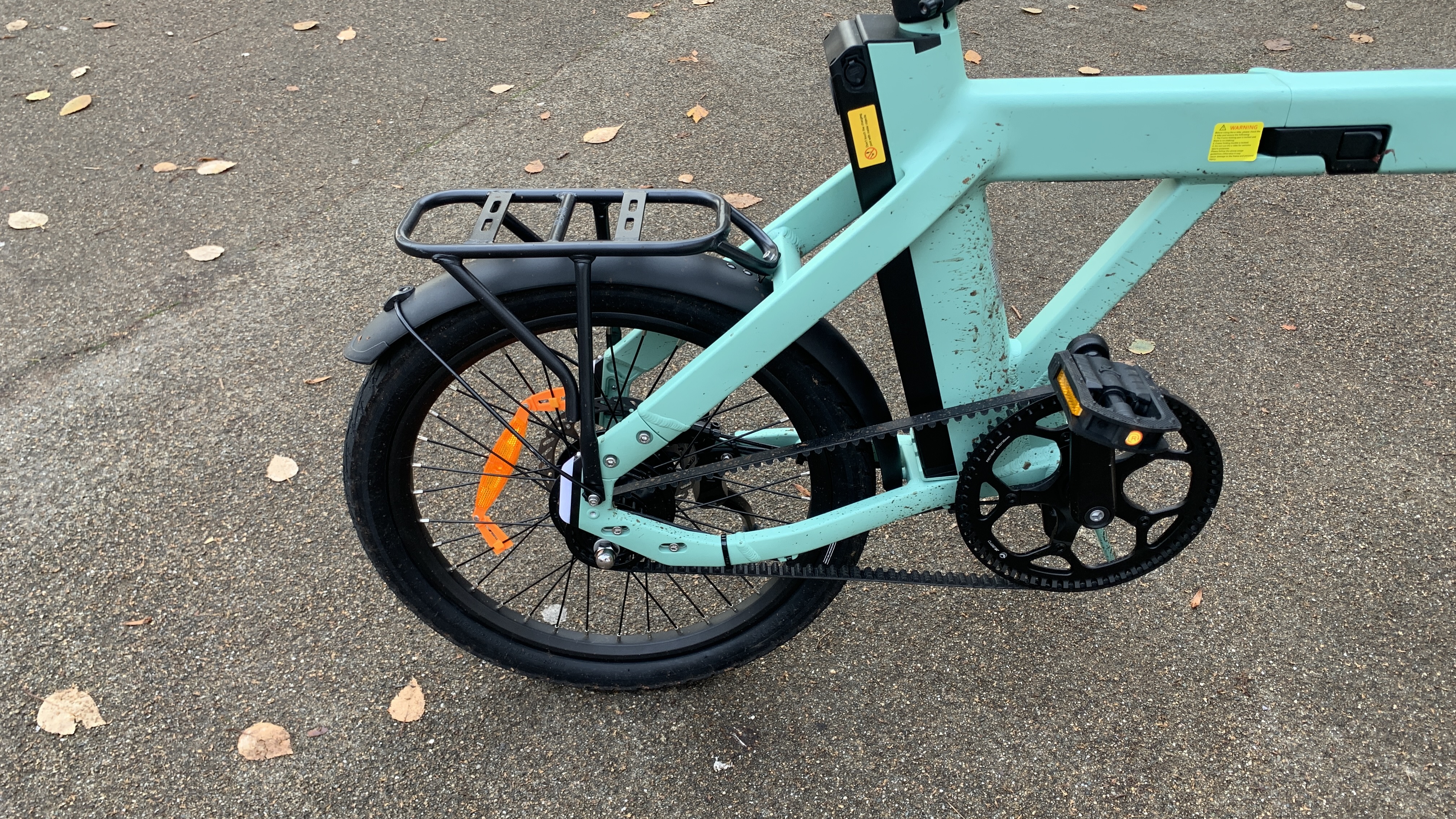
- Reliable and well-engineered folding mechanism
- Carbon drive belt
- Upright riding position
Let's begin with the folding process for the P20, which is a five-step operation. This is achieved through a five-step process, although I tended to only perform two of these steps for most folds. The steps comprise adjusting the handlebar, folding the riser, folding the frame, lowering the saddle, and finally folding the pedals. Most of the time, steps two and three are sufficient, although you might also need to make the saddle adjustment if you need to fit the e-bike into tight spaces.
I prefer not to adjust the handlebars too much, because that involves messing around with a clamp mechanism that I don’t believe would stand the test of time if it was used regularly. I also don’t see a huge benefit in tucking them away any more than is already the case in their natural position.
The riser rotation mechanism is nice and robust while allowing for the rider to rotate the riser and handlebars down to the front wheel. Unfortunately, there’s no way of locking the riser into position when the bike is folded. The frame folds in half at the midpoint with a seriously sturdy and robust folding mechanism. Engwe is getting so much better at implementing intricate design features, and it really shows on the P20.
One of the standouts of the whole design is that the two halves of the e-bike connect together through magnets that are mounted to each wheel. It’s a really ingenious solution that eliminates the need for any moving parts, which could fail over time.
It’s almost impossible to review a foldable e-bike without comparing it to the folding mechanism of the Brompton. With both e-bikes in my possession, I decided to fold one after the other and there’s no clear winner. I think Engwe’s system is simpler to operate and I love the magnetic catch, but the Brompton is smaller and lighter and therefore easier to maneuver. I think it all comes down to what overall e-bike size you want, and what your budget is.
Moving on from folding, the P20 is single-speed, with a long-lasting carbon belt drive and disc brakes. There are no major performance issues with this setup, although you do lose a little efficiency with the carbon drive compared to a metal chain. The 20-inch puncture-proof tires are perfect for city cruising, but lack the bulk required for going up and down curbs or off-road. Don’t judge it too harshly, though, as this e-bike knows exactly what it is and what it isn’t designed to do.
- Design Score: 4.5/5
Engwe P20: Performance
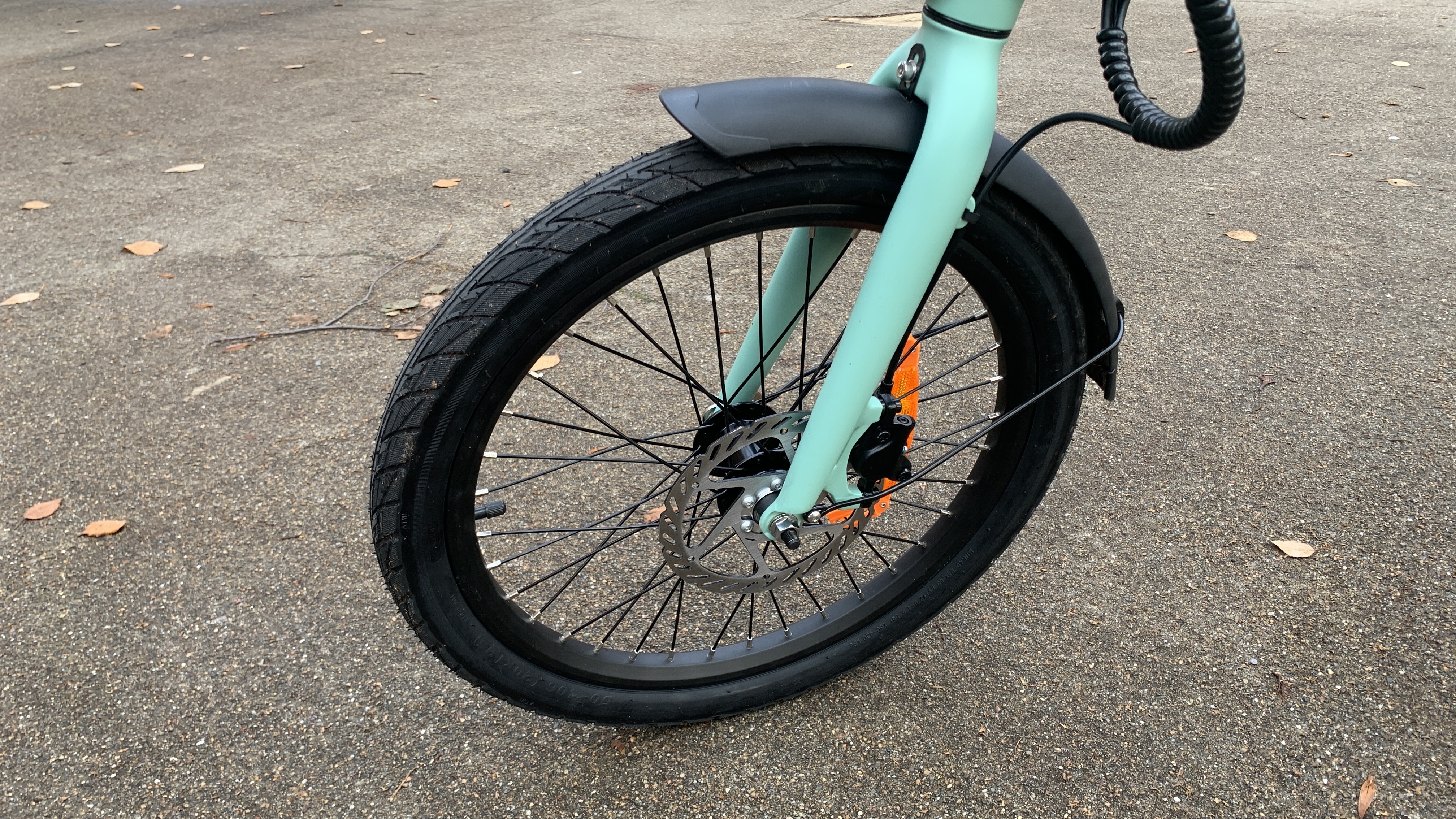
- Cadence is too high
- Top speed of 25kph / 15.5mph
- No suspension
The first thing I noticed was how easy it was to get up to the top speed of 25kph / 15.5mph. This is due to the power of the motor, available torque, and the achievable cadence of the single-speed setup.
This is good news in the sense that it takes minimal effort while using minimal battery. The downside to this is that it’s very difficult to ride beyond 30kph / 18.5mph, because the cadence is just too high. The experience left me wanting a gear with lower cadence, or three or four extra speeds to cycle through. I think the Brompton 4-speed has it perfect, although greater resistance on the P20’s single speed would also be sufficient.
The issue was particularly noticeable when going downhill, but the e-bike really came into its own when I was nipping around flat city streets, on which the P20 is responsive, quick, and a joy to ride. If you’re looking for a simple, good-looking, foldable bike for cruising around a town or city, the P20 is one of the best options I’ve tried.
The motor is completely silent, so at times it feels like you’re riding a standard pushbike. You’re also not subject to any sudden jerky movements thanks to the torque sensor, which picks up the rotation of the pedals perfectly. The P20 responds quickly and efficiently, so it’s always ready to go when you are.
As there’s no suspension, and given the size of the tires, you’ll want to avoid off-roading or going up and down too many curbs. That being said, I did find that the e-bike was remarkably capable of cushioning almost every bump I threw at it.
The carbon belt is a winner, and I’m a big fan of these types of belts because they’re less susceptible to problems with grease or dirt. I’m sure we’ve all experienced those times of getting our clothes dirty from getting on or off a bike, and this is all avoided with the P20. The belt promises to deliver 330,000km of distance, although it’s worth noting that carbon belts are generally less efficient than standard chains.
I think most people will love the P20, although you might, at times, find yourself wanting an extra gear or two.
- Performance score: 4/5
Engwe P20: Battery life
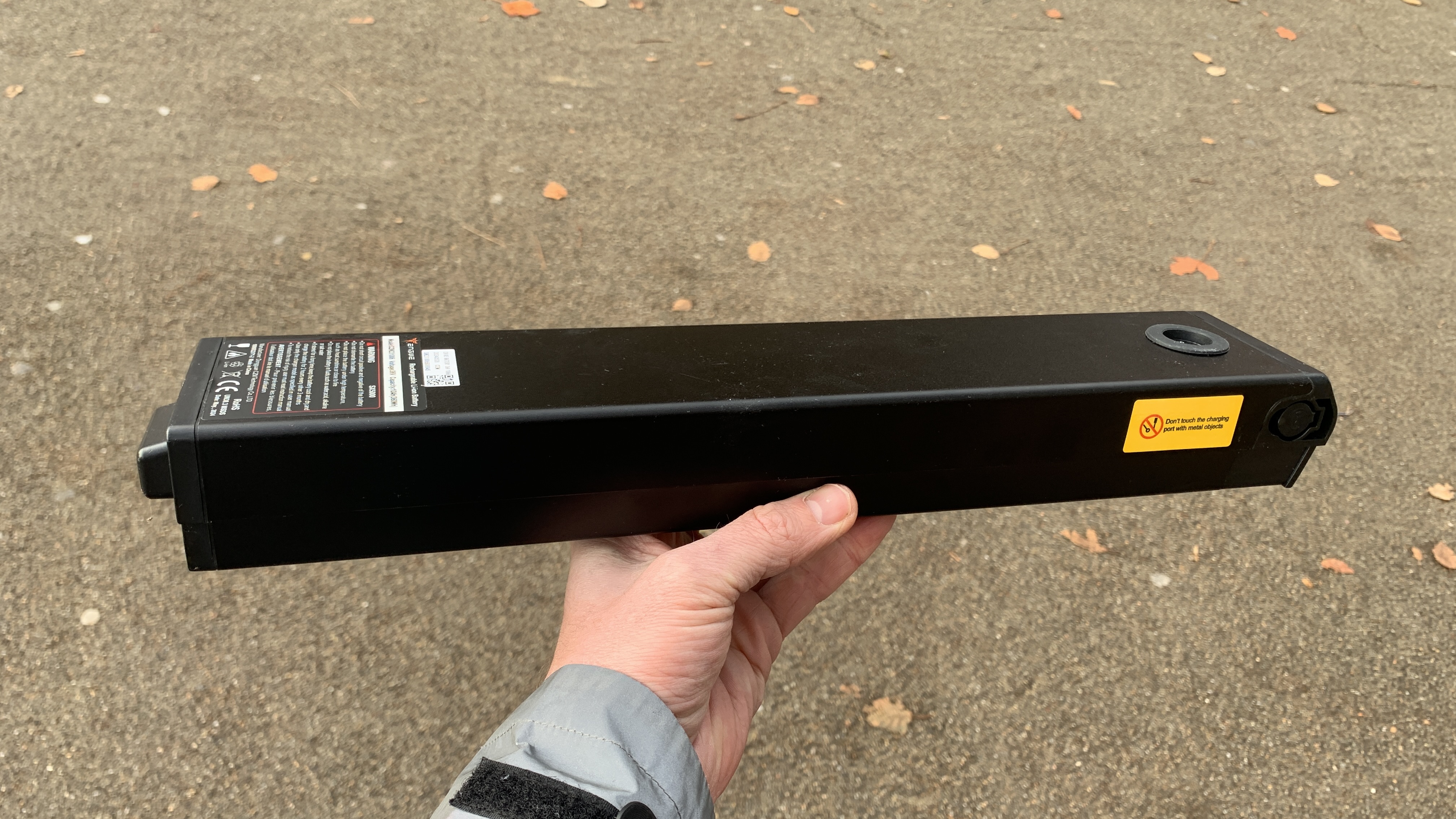
- 100km range
- 36V 9.6A battery
- Five-hour charge per battery
The advertised range of 100km is only achievable in perfect conditions, at the lowest pedal assist, and with minimal rider weight. In reality, you’ll be looking at nearer 50km / 30 miles per charge. This is still more than enough for most daily commutes, especially considering that this e-bike is designed for shorter rides rather than for long journeys.
You’ll only be able to attach the single 36V 9.6A battery to this frame, so there’s no option to double the range. Engaging and disengaging the battery is very easy thanks to Engwe's attention to engineering an effective clip mechanism.
Removing the battery will let you charge it at home or at work during the day. It also reduces the chances of the battery being stolen, although there is an integrated anti-theft battery lock. Charging from empty to full takes in the region of five hours.
- Battery life score: 3.5/5
Engwe P20: Scorecard
Buy it if...
Don't buy it if...
Also consider
How I tested the Engwe P20
I rode the Engwe P20 on and off over the course of a couple of months. I rode it around city streets, up and down main roads, as well as along my daily 7-mile commute which takes me through the countryside. I covered almost every type of terrain except off-roading.
First reviewed: November 2024







